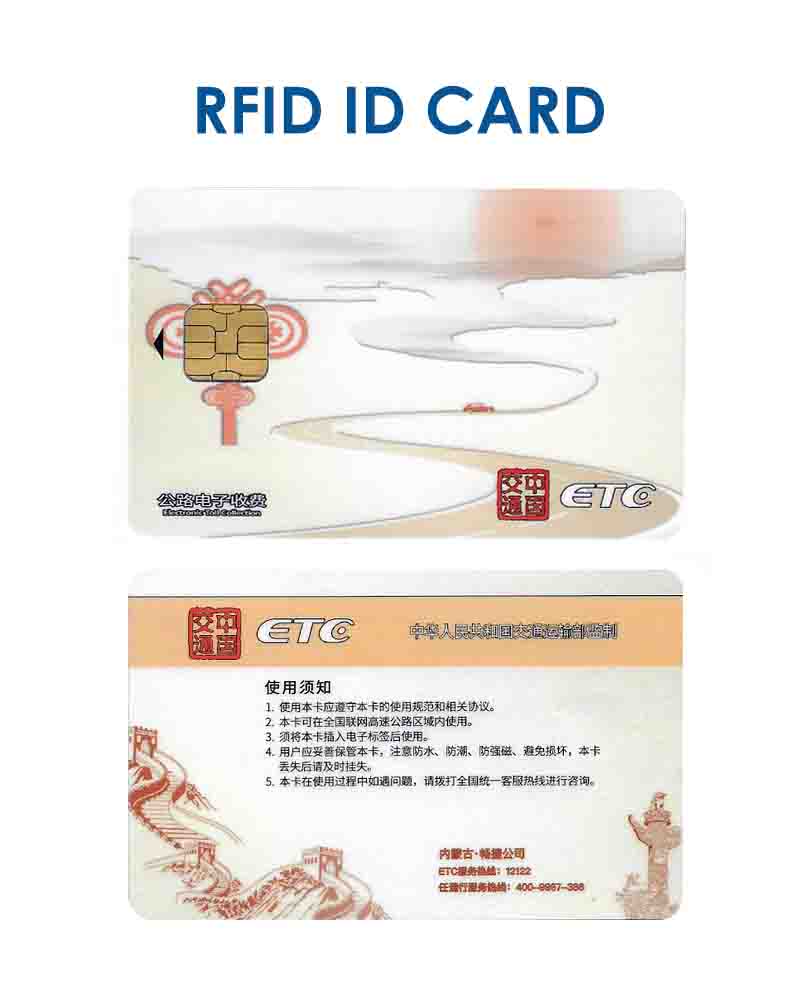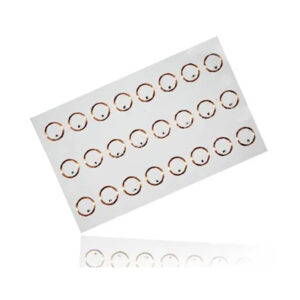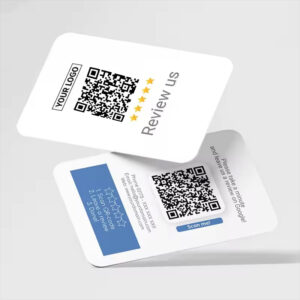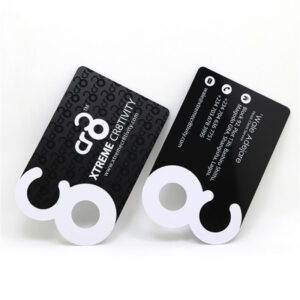Description
Key Components:
- RFID Chip: The RFID card contains a small microchip that stores data. This chip is responsible for transmitting the data via radio frequency signals. The chip can store a variety of information, from simple identification data to more complex details depending on the application.
- Antenna: The antenna is typically embedded within the card and is responsible for receiving and sending radio signals to the RFID reader. It allows the card to communicate wirelessly with a reader without direct contact.
- Power Source: In most RFID cards, the power needed for communication comes from the reader (in passive RFID cards). However, some RFID cards (active RFID) have their own battery to power the chip and antenna for longer-range communication.
Types of RFID Cards:
- Passive RFID Cards: These cards do not have an internal power source. Instead, they receive power from the RFID reader’s radio signal. Passive RFID cards are typically used for short-range applications, like access control or public transportation tickets.
- Active RFID Cards: These cards have their own power source (a battery) and can transmit data over longer distances, sometimes up to several hundred meters. Active RFID cards are often used in tracking systems, such as for asset management or vehicle tracking.
- Semi-Passive (Battery-Assisted) RFID Cards: These cards also have a battery but only use it to power the chip’s memory or to enhance performance when communicating with readers. They don’t transmit signals on their own but rely on the reader’s signal for communication.
Common Uses:
- Access Control: RFID cards are widely used for secure access to buildings, offices, or rooms. Employees or authorized personnel simply wave or tap their card near an RFID reader to gain entry. Many modern hotel room keys also use RFID technology.
- Contactless Payments: RFID cards, often linked to a bank account or credit card, enable quick, secure, and contactless payment methods. Users can simply tap the card on a point-of-sale (POS) terminal to complete a transaction without the need for physical contact.
- Public Transportation: Many cities use RFID cards for public transport fare systems, allowing passengers to tap their cards when boarding trains, buses, or subways, speeding up the process and reducing the need for cash or paper tickets.
- Inventory Management: RFID tags and cards are used in supply chains and warehouses to track goods and inventory items efficiently. The RFID system automatically reads the cards or tags to update inventory levels in real-time.
- Loyalty Programs: Many retailers use RFID cards for loyalty programs, where customers can easily collect points, access discounts, or redeem rewards by tapping their cards at checkout.
Advantages:
- Speed and Convenience: RFID cards can be read almost instantaneously without needing to be inserted or swiped. This makes them faster and more convenient than traditional magnetic stripe or chip cards.
- Contactless Interaction: Since RFID cards don’t require physical contact with a reader, they help reduce wear and tear and can be used in environments where quick, hands-free transactions are essential.
- Enhanced Security: RFID cards offer enhanced security compared to traditional magnetic stripe cards. They often use encryption for communication, reducing the risk of data theft or card cloning. Some RFID cards also feature multi-factor authentication for extra security.
- Durability: RFID cards are usually made from strong materials like PVC or ABS plastic, which makes them resistant to physical damage such as bending, scratching, or cracking.
Limitations:
- Range: While passive RFID cards have a limited read range (typically a few inches to a few feet), active RFID cards, which have a battery, can operate at longer distances. However, this can be a concern in systems where control over proximity is important.
- Interference: RFID systems can sometimes experience interference from certain materials, such as metal or water, which may affect the card’s ability to communicate with the reader effectively.
- Cost: Although passive RFID cards are relatively inexpensive, active RFID cards tend to be more costly due to the added battery and longer read range.





Reviews
There are no reviews yet.